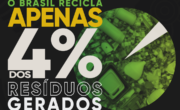Okay, so check this out—Solana has been sprinting forward. Wow! The pace is dizzying, and my instinct said this would get messy fast. At first I thought wallets would just follow along, uniform and steady. Actually, wait—let me rephrase that: I expected gradual, careful upgrades, but the reality is more like rapid feature bursts and patch-after-patch. On one hand the innovation is thrilling, though actually it leaves room for real security trade-offs that most folks gloss over.
Seriously? Yes. Wallet convenience and multi-chain capability can open doors, and they can also open lockers for bad actors. My gut told me to be cautious, because convenience often masks fragility. Something felt off about how quickly some integrations rolled out. I’m biased, but I prefer tools that earn trust slowly though grow quickly when proven.
Here’s the thing. Wallets are the user interface to crypto identity. Shortcuts here impact everything downstream. So when a wallet like the phantom wallet starts talking multi-chain, you should lean in and read closely. Hmm… there are trade-offs, and those trade-offs deserve clear thinking.

Multi-chain support: useful, messy, and absolutely necessary
Multi-chain means you can manage assets across different blockchains in one place. Simple idea. Really helpful. But it also means more surface area for bugs and exploits, because each chain brings its own rules, smart contract standards, and risk vectors. Initially I thought that a single UI layer would standardize safety. Then I realized how many subtle differences there are between chains—token standards, signature schemes, and gas/payment models—all of which change the security calculus.
For example, Solana’s transactions and account model differ from EVM chains. That complicates how a wallet signs and forwards transactions. On EVM you expect approve+transfer patterns; on Solana it’s often program-invoked state updates. So a multi-chain wallet must translate intent correctly. If it doesn’t, users might unknowingly sign permissions that expose funds. That part bugs me.
Oh, and by the way… seamless UX can hide dangerous prompts. A single “sign” button for multiple chains is convenient. But very very important warnings can be lost in that convenience. My working rule: ask twice before authorizing something that touches multiple chains.
Phantom’s approach to security: what to watch for
Phantom built its name on Solana, and that heritage matters. They understand the Solana account model, and they can optimize performance and UX in ways newcomers cannot. That historically gave them a security edge on Solana-native flows. Whoa! But expanding to multi-chain is a bigger lift.
They need to ensure a few core things. One, cryptographic isolation: private keys and signing logic must remain consistent and secure across integrations. Two, clarity of intent: the wallet should make it explicit what chain and what program you’re interacting with. Three, upgrade transparency: users should be able to audit or at least verify changes to how transactions are constructed.
On one hand some developers assume users read long technical dialogs. On the other hand most users skim, click, and move on. That mismatch creates real risk. My instinct says Phantom has been good about labeling Solana flows clearly, but every new chain is a new accident vector. I want to see more deliberate “are you sure?” guardrails for cross-chain signatures.
Here’s a practical point. Keep an eye on how the wallet handles token approvals and cross-chain bridges. Bridges, while convenient, have been the site of many high-profile losses. If a wallet abstracts a bridge call into a single click without showing the underlying contract or route, that’s a problem. I’m not saying Phantom does this wrong. I’m saying users should know to look.
Usability vs. security—how Phantom can balance both
Designing for both is classic product tension. Easy access vs. robust safety. Who wins? Ideally both. In practice, you need layered controls. Short sentence. Medium sentence clarifying the approach: provide quick-mode for everyday actions, and an advanced-mode for power users. Long explanation follows, because the devil lives in the details: advanced-mode should show raw transaction data, explicit program IDs, and allow revoking signatures before a timeout—so users can intervene if they see something odd (and yes, this requires thoughtful UX to avoid confusing beginners).
Initially I believed that more bells and whistles equal better security. Then I realized less is sometimes more: fewer attack surfaces. So a layered approach—defaults that protect, with opt-ins for power features—feels right. Also, recovery flows matter. If your key store is compromised, how fast can you lock down staking, token approvals, and NFT transfers? Workflows for freezing or quarantining assets would be game changers.
One more design note: alerts and education should be contextual. Show the user why a prompt matters. Don’t just say “sign transaction.” Show what the signature does. And if something crosses chains—highlight that risk specifically. People respond to concrete consequences, not vague warnings.
Real-world tips for Solana users
Be practical. Use hardware wallets for large balances. Yes, that extra step is annoying. But it’s worth it. Keep small balances in hot wallets for DeFi activity. Larger holdings? Cold storage. Seriously, this is basic risk management. For NFTs and everyday swaps, a daily-use wallet is fine, though I wouldn’t keep jackpot funds there.
Check addresses carefully. Short. Use verified integrations. Medium: when connecting dApps, confirm the chain is Solana if the dApp is Solana-native. Long: cross-chain dApps often mimic each other, and fraudsters love to spoof interfaces—so confirm domains, signatures, and community-reviewed sources before linking your wallet.
Be conservative with bridges. They are not the same as transfers within a chain. Bridges hold liquidity and require trust. Many losses come from bridge exploits, not wallet flaws per se. Use reputable bridges only, and keep an eye on their insurance or code audits if available.
Also, revoke approvals periodically. Wallets on Solana are getting better at showing approvals, but it’s still clunky sometimes. Revoke access to unused programs and approvals. It’s tedious, I know… but it reduces long-term exposure.
Developer-focused security notes
If you’re building dApps for the Solana ecosystem, test how wallets like Phantom render your transaction intents. Don’t assume the wallet will do the right thing. Short observation: design with explicit metadata. Medium: include clear program names and optional human-readable descriptions in your transactions. Long: since wallets parse transaction instructions to show users what they’ll sign, the more context you provide (without leaking secrets), the more likely users will make informed decisions and not blindly accept malicious prompts.
Audits help but are not magic. An audited bridge or program can still be exploited if the UI allows deceptive flows. So pair audits with runtime monitoring and fast incident response plans. Be ready to communicate clearly to your users during incidents. Honesty and speed build trust.
FAQ
Is Phantom safe for Solana NFTs and DeFi?
Generally yes, Phantom has a strong Solana pedigree and sensible defaults. However, no wallet is perfectly safe. Use hardware for large assets, review transaction intents, and be cautious with cross-chain bridges and third-party integrations.
Should I trust multi-chain features?
They’re useful, but treat them like any new tool. Verify each chain’s flow, understand what signatures you’re giving, and prefer gradual rollouts. If you’re not 100% comfortable, keep funds segmented and minimize cross-chain movements.
How do I stay updated on security changes?
Follow official channels and community forums. Watch for signed update notices. And consider subscribing to audit firms or security alerts relevant to Solana projects. Oh, and ask questions—the community often flags weird behaviors fast.
Alright—so what’s the takeaway? Not a tidy summary, because tidy summaries are boring. Instead: be curious, be skeptical, and use tools that make safety obvious. My final thought: wallets like Phantom are moving the space forward, but user vigilance still wins the day. I’m not 100% sure about every new feature rollout, and that uncertainty is healthy. It keeps us all asking questions, and that’s how the ecosystem gets better.












